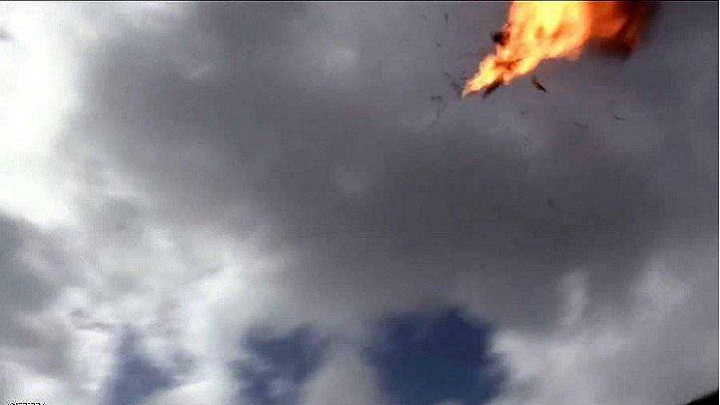With Yemeni Responses Unabated , Saudi Military Strategy Review Unavoidable
YemenExtra
Y.A
Yemeni Ansarullah’s missile strikes deep into the Saudi territories are now launched daily and the Saudis everyday witness somewhere in their country being pounded by the Yemeni forces’ drones and missiles in retaliation to five years of unceasing bombing by the Saudi-headed Arab coalition. While the highly modern and expensive air defenses of Saudi Arabia have so far been desperate to protect the Saudi skies, Ansarullah’s relatively cheap but modern and creative drones continue to deal painful blows to the Saudis and that is what every day taking new aspects. Many military analysts talked about the establishment of a military balance between Yemen and the aggression countries. Now we can go farther and say that the balance is changed in favor of Ansarullah amid ramped-up strikes.
Just on Wednesday, the Yemeni forces at least three times pounded targets into the depth of the Saudi territories. Yahya Saree, the spokesman to the Yemeni forces, in a short statement said Yemeni units launched massive operation on Jizan airport. They also launched two attacks on King Khalid airbase in Khamis Mushait in Saudi Arabia’s southwest. The spokesman added that the combat drones targeted “important” military aims in the airport, leading to grounded flights there.
It is not an aberration if the overnight retreat of the UAE from Yemen last week with the announcement of Abu Dhabi to reduce its forces and operations in the war-ravaged country be read as a result of the fear of meeting a similar fate, something left Riyadh finding itself alone in a battleground with Ansarullah. Now the main question is that until when the Saudis can withstand the movement’s blows to their economic and military centers. On Wednesday, Muhammad al-Bakhiti, a senior official of Ansarullah, in an interview with Al-Mayadeen news network said that the “aggression coalition has rejected an offer for a comprehensive ceasefire in Yemen.” But this insistence on the continuation of the war is hardly expressive of the Saudi strength.
Financial backup for war shrinks
Since its foundation, the Al Saudi regime relied on petrodollars as the main source of income. Since the 1970s that President Richard Nixon designed his “bipolar” strategy for West Asia, according to which Saudi Arabia and the pre-revolution Iran played as two economic and military pillars of the US in the region, Riyadh has been playing as Washington’s regional proxy on the strength of its oil money. The main driving force for Saudi Arabia to start 2015 war against Yemen that continues to date is the huge money earned by oil sales.
The Saudis, never daring enough to start a war by themselves, resorted to other countries to buy mercenaries for the battlegrounds. Sudan was the biggest country to supply mercenary forces to the Saudi-led war. The same happened in the air operations. The Saudis hired for high pays pilots from Eastern European states as well as Britain for air operations against Yemen where mainly civilian installations were pounded, leaving many killed and many more displaced. Now the Saudi rulers begin to think that their economy faces serious challenges as the oil prices are low and their oil facilities are now within the reach of the Yemeni forces’ raids, something destroyed the confidence of the foreign investors in the Saudi economy.
Additionally, the Yemeni threat in the Persian Gulf can endanger the energy flow in the main water route. This also overshadows Saudi Arabia’s economy as the kingdom’s economy reserves close bonds with secure energy flow in the region. Another challenge is the costs Saudi Arabia has to pay for detecting and intercepting every single ballistic missile fired from Yemen. Every Patriot missile costs Riyadh about $3 million to be prepared for an interception operation. For a single ballistic missile roughly three missiles should be fired. Add to this the costs of maintenance. The Patriot air defense systems cost $200 million in maintenance annually. That is while Ansarullah since March of 2015, the month Saudi Arabia launched its aggression against the country, fired hundreds of mid-range ballistic missiles into Saudi Arabian territories.
Bigger challenges of Ansarullah’s attacks
The Saudi leaders have always been seeking to secure the Arab world leadership using their hosting of holy Muslim sites, huge oil wealth, strategic alliance with the West, and also large-scale weapons purchases for military superiority among the other Arab states. They also thought a war can enhance their face even further. But they never thought that the war not only will not promote their regional and international prestige and their will to secure Arab world hegemony but also it destroys their image as a powerful actor as the Ansarullah’s daily responses to the atrocities continue to target the depth of the Saudi territories while the Saudis are incapable of thwarting them. Something leading Saudi Arabia to fall to a second-degree regional country in terms of military strength. Such a weak face of Saudi Arabia emboldened other Arab countries which once set their heart on Riyadh protection of them or avoided a confrontation with the kingdom to review their thought. Qatar is an example. Doha has never been so defiant to Saudi Arabia meddling as it is now.
Ansarullah’s blows, on the other hand, impaired Saudi Arabia’s bargaining power in the negotiations for diplomatic and military help with non-Arab allies. Trump several times in largely humiliating comments blackmailed the Saudis. Once he told the Saudi king “you cannot survive for two weeks” without Saudi Arabia in a phone conversation that was more like extortion than talk of two allies.
So, with regard to the weak status of the Saudis in the war, Riyadh’s rejection of a truce mainly serves an aim to build a condition in which the monarchy’s defeats are covered. At the end of the road, very likely in the near future, Saudi Arabia will have to give its strategy a review to avoid further retaliatory strikes by the Yemeni resistant movement.
Source:Website

